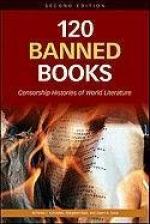|
This section contains 5,913 words (approx. 20 pages at 300 words per page) |

|
SOURCE: Graham-Jones, Jean. “Broken Pencils and Crouching Dictators: Issues of Censorship in Contemporary Argentine Theatre.” Theatre Journal 53, no. 4 (2001): 595-605.
In the following essay, Graham-Jones discusses how Argentine playwrights devised ways to incorporate “counter-censorship” into their productions during the repressive 1970s in that country.
Autocensura [self-censorship] continues to be as dirty a word for the Argentine artist as it was during the 1976-83 military dictatorship. When asked about the subject, artists commonly respond much as the writer Héctor Lastra did in 1986: “I have always insisted that self-censorship does not exist. What exists is censorship. To speak of self-censorship is a way of being reactionary, because you're attacking the individual.”1
Is the line between censorship and self-censorship in recent Argentine cultural production as easily drawn as Lastra would have us believe? Argentine cultural critic Andrés Avellaneda has written that cultural control inextricably links together Power and Text: “The...
|
This section contains 5,913 words (approx. 20 pages at 300 words per page) |

|


